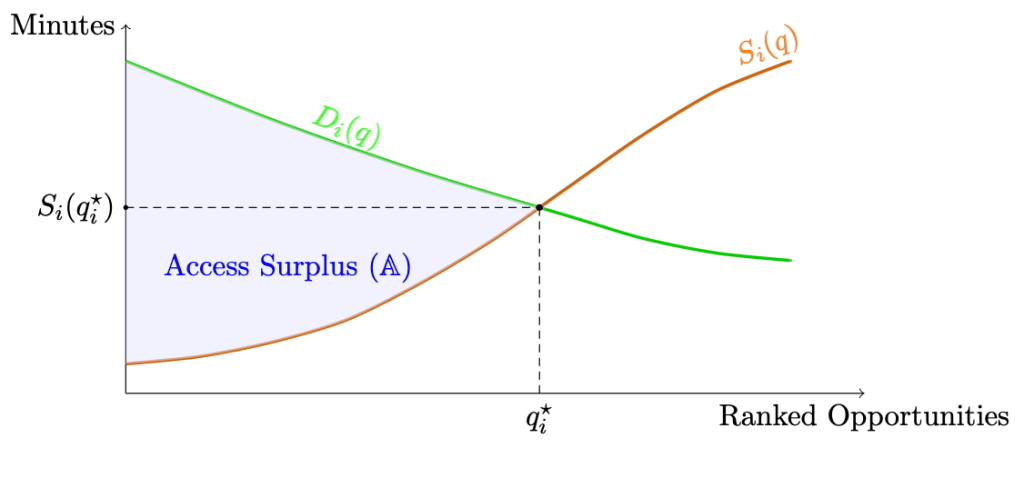Access Surplus: Valuing Accessibility by Integrating Opportunity Supply and Willingness to Pay
Recently published:
Levinson, David, and Isaac Mann (2025) “Access Surplus: Valuing Accessibility by Integrating Opportunity Supply and Willingness to Pay.” Findings, October. [doi]
Abstract: We introduce Access Surplus as a welfare measure that frames accessibility in a market-like form: the inverse cumulative cost to reach the next opportunity is the ‘supply,’ and the willingness to pay for one more choice is the ‘demand.’ The area where demand exceeds supply, up to a natural stop point, is Access Surplus . The metric avoids arbitrary cut-offs, is additive over residents, links clearly to project effects, and stays transparent when only origin–destination times and counts are available.


